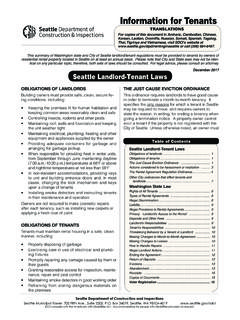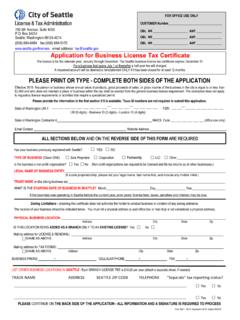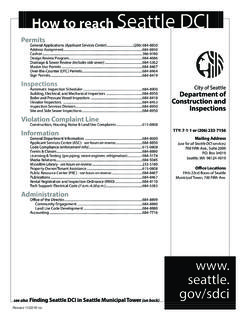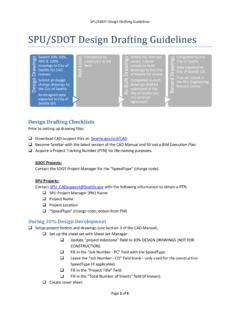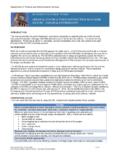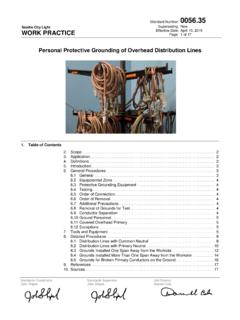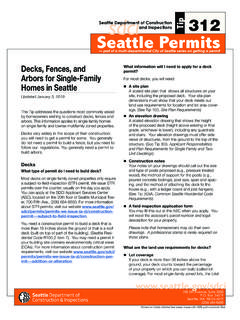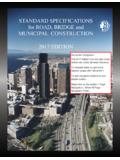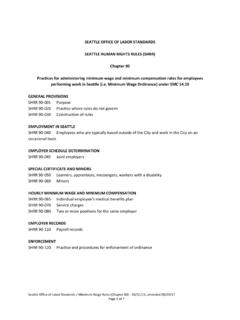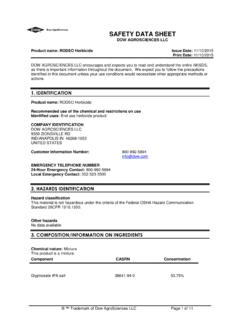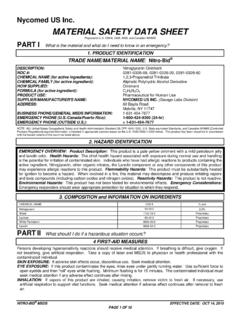Transcription of Seattle Department of Construction sdci and Inspections ...
1 Of Seattle Department of Construction and Inspections700 5th Avenue, Suite 2000 Box 34019 Seattle , WA 98124-4019 (206) 684-8600 Printed on totally chlorine-free paper made with 100% post-consumer fiberSeattle PermitsTipsdciSeattle Department of Constructionand Inspections part of a multi-departmental City of Seattle series on getting a permit322 Spray-Applied foam Insulation Updated September 24, 2014 Spray foam insulation can serve as a useful energy conservation tool. Although spray foam is sometimes more expensive than conventional fiberglass batts, some foam types provide almost double the insulating value of fiberglass. Spray foam can fill odd-shaped spaces, and certain varieties can also function as an air barrier and vapor retarder. However, the spray foam products on the market each have different characteris-tics and may increase fire hazards, so it is important to determine the correct spray foam for your DCI will accept use of spray-applied foam insulation products within wall, floor and ceiling assemblies, if they comply with conditions of an up-to-date testing evaluation report from ICC-ES (Evaluation Service) or other certified testing lab, and provisions of the Seattle Residential Code (SRC) or the Seattle Building Code (SBC), and the Seattle Energy Code (SEC).
2 Code Requirements !The conditions of use for each spray-applied foam insulation product are unique. A copy of the ICC-ES report is required at the job site. !The building plans included in the permit applica-tion shall identify: !The areas where spray-applied foam insula-tion product will be used !The R-value of the foam designated for each location !The installer must provide the Seattle DCI field inspector with a letter certifying that the installa-tion was in accordance with the manufacturer s instructions and the testing evaluation report, and include the date, product name, installer s name and address, company name, and project address. !The product shall have a maximum flame-spread index of 75 and a maximum smoke-developed index of 450 (SRC , SBC ). ! A thermal barrier, at least equivalent to 1/2-inch gypsum board, shall separate foam insulation from interior spaces (SRC , SBC ).
3 ! Where fire-rated assemblies are required, spray-applied foam may only be used if the testing evalu-ation report includes details for tested fire-rated assemblies. ! The substitution of spray-applied foam for other types of insulation in tested assemblies is not allowed. ! For Types I, II, III and IV Construction , the testing evaluation report must specifically address provi-sions of SBC regarding exterior walls and for roofs. See also the special approval exception in Section ! Building envelope assemblies shall have vapor retarders in accordance with SRC or SBC , unless the testing evaluation report states that the insulation has a perm rating of or is an unvented attic or "unvented enclosed rafter space" and what do they have to do with spray foam insulation?A ventilation space is normally required between roof insulation and the roof deck above.
4 Without this ventilation space, moisture migrating through the insulation can condense or freeze on the roof sheath-ing above, and this has rotted out many roofs in Seattle . However, if you use a type of insulation that doesn t allow air and water vapor to pass through to the roof deck (or if you keep the roof deck warmer with additional insulation above the sheathing) then condensation is unlikely and the ventilation space is not required. An attic without ventilation is known as an unvented attic. If the roof/ceiling assembly is formed by rafters with the roof sheathing and the ceil-ing materials attached directly to the rafters, this is an enclosed rafter space (commonly called a cathe-dral ceiling ). If no ventilation is provided through the LEGAL DISCLAIMER: This Tip should not be used as a substitute for codes and regulations.
5 The applicant is responsible for compliance with all code and rule requirements, whether or not described in this Tip #322 Spray-Applied Form Insulation page 2cavity created by the assembly, this is known as an unvented enclosed rafter space. Spray foam insulation products are categorized as either air-impermeable or air-permeable depend-ing on the installed thickness. Closed-cell types may be rated as air-impermeable with less than an inch of thickness, whereas the less-expensive open-cell types may require 4 inches or more, or may not be air-imper-meable at any thickness. Check the testing evaluation report (see below) for each specific Seattle Residential Code and Seattle Building Code provide several options for unvented attic or unvented enclosed rafter space assemblies. Spray foam insulation may be used in some of those options, but it is critical to first determine whether air-perme-able or air-impermeable insulation is required.
6 Four configurations of unvented attics or unvented enclosed rafter spaces are allowed (SRC Section and SBC Section ). See Figure Air-impermeable insulation applied directly to the underside of the roof sheathing. 2. Air-permeable insulation between the roof joists, with a Class III vapor retarder coating or covering applied directly to the underside of the insula-tion. (A Class III vapor retarder might be as simple as a coat of latex paint, but any coating applied must be specifically recognized by the spray foam manufacturer s written instructions.)3. Air-permeable insulation applied to the underside of the roof deck, with minimum R-10 rigid insulation above the roof Air-permeable insulation applied to the under-side of minimum R-10 air-impermeable insula-tion (spray foam or rigid board), which is applied directly to the underside of the roof 1 - Spray Insulation ApplicationLEGAL DISCLAIMER: This Tip should not be used as a substitute for codes and regulations.
7 The applicant is responsible for compliance with all code and rule requirements, whether or not described in this Tip #322 Spray-Applied Form Insulation page 3 ICC Evaluation Service Reports (ICC-ES)ICC Evaluation Service (ICC-ES) produces testing evaluation reports for many Construction -related prod-ucts. Their reports for spray foam insulation summa-rize the product characteristics and limitations for the use of the products. They can be downloaded from Test reports from other certified test-ing agencies are also acceptable. Important elements to check in the ICC-ES report for your product: !Section (or sometimes Section ) to check the allowable temperature ranges for storage and application. These temperatures are sometimes quite restrictive. !Section to determine the maximum allowable installed thickness.
8 The maximum allowable thick-ness varies between products, from as little as 2 inches to as much as 14 inches. ! Section to determine the actual R-value of the thickness you plan to install. ! Section for the installed thickness required to be considered air impermeable. (If the report doesn t identify this, the product is considered to not be air impermeable at any thickness.) ! Section for special restrictions on application temperatures or thicknesses. ! Section for the thermal barrier required to protect the building interior from the spray foam insulation for fire safety. Generally this is -inch thick gypsum board or equivalent. ! Section for any limitations on Construction types, such as only for Type 5B Construction . ! Section for required qualifications of installers. Many products can only be installed by installers that are trained and certified by the Further Information !
9 Further information on the Seattle Residential Code and Seattle Building Code requirements is avail-able online at !Further information on the Seattle Energy Code requirements is available online at the energy code website at to electronic versions of Seattle DCI Tips, Director's Rules, and Forms are available on the "Tools & Resources" page of our website at Paper copies of these docu-ments are available from our Public Resource Cen-ter, located on the 20th floor of Seattle Municipal Tower at 700 Fifth Ave. in downtown Seattle , (206) to Informatio
